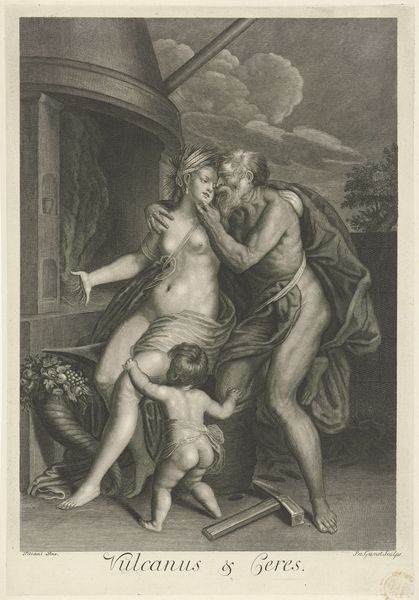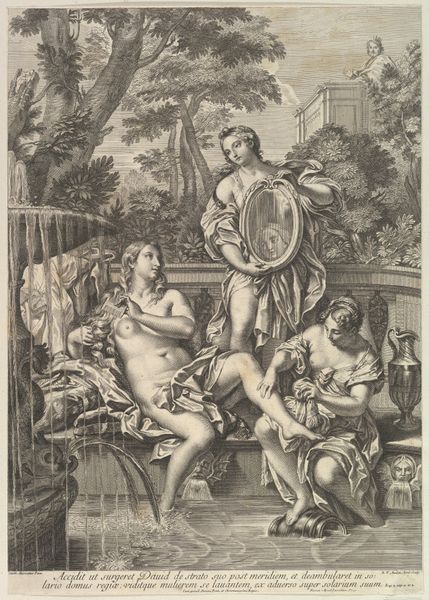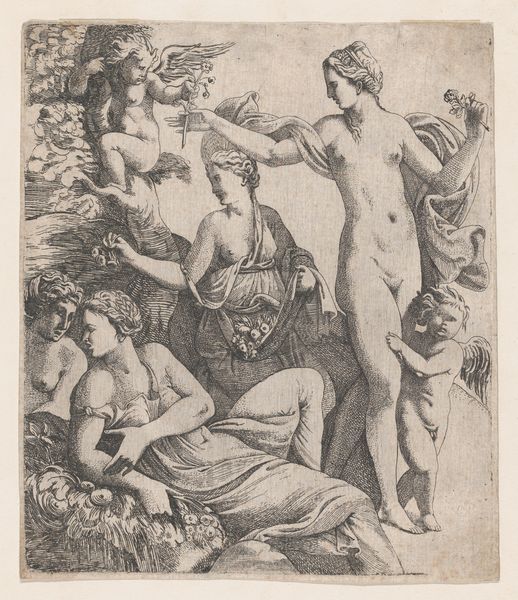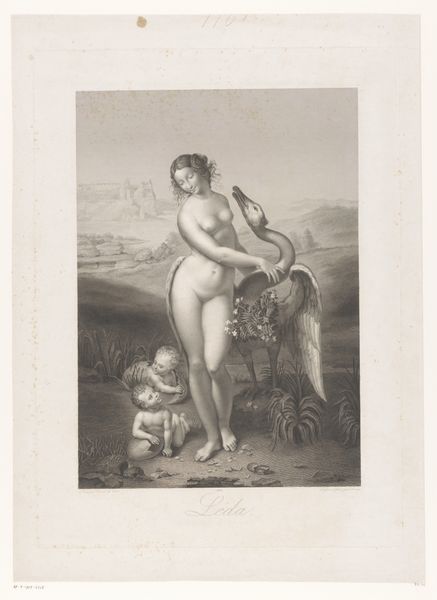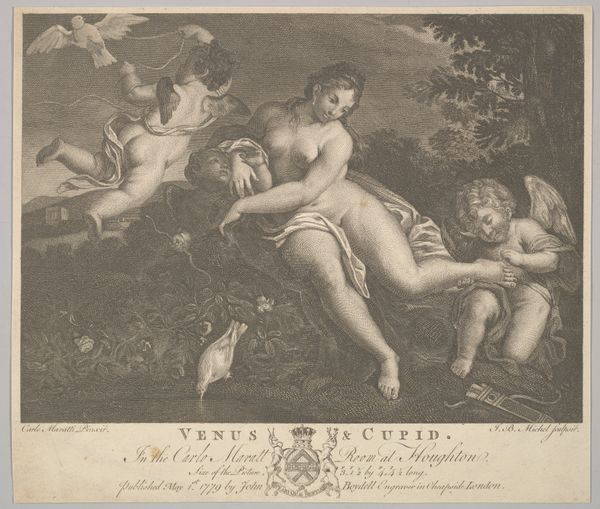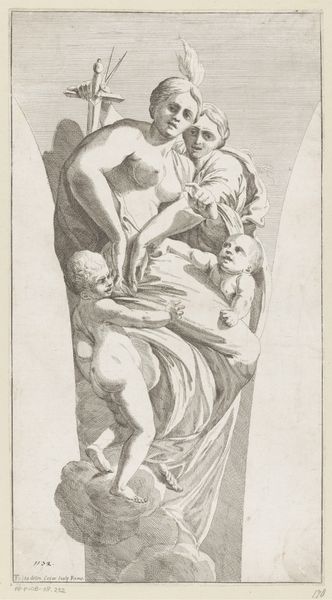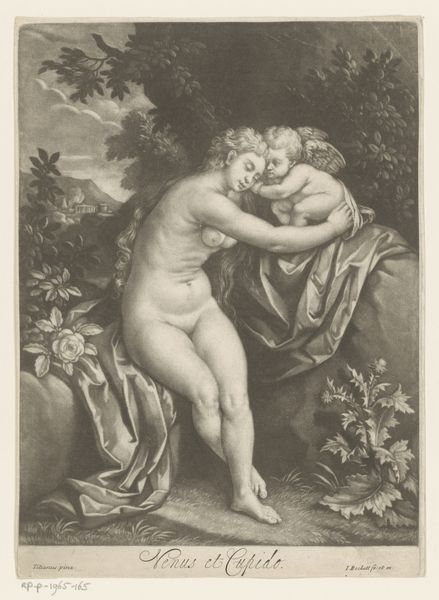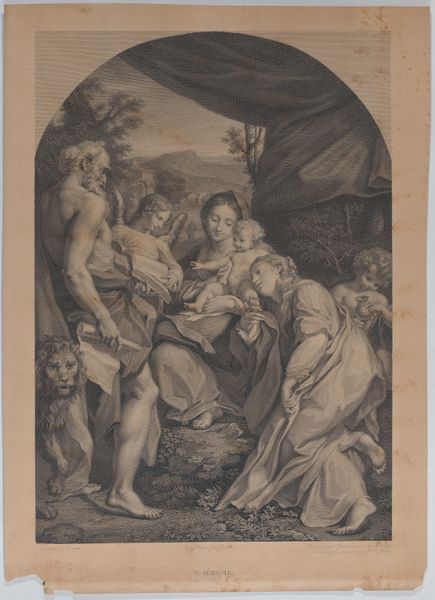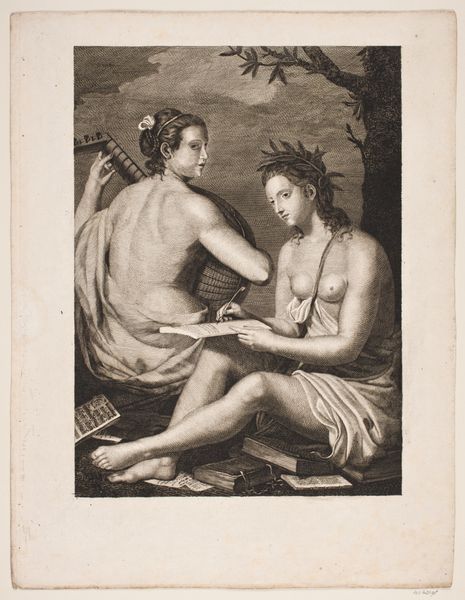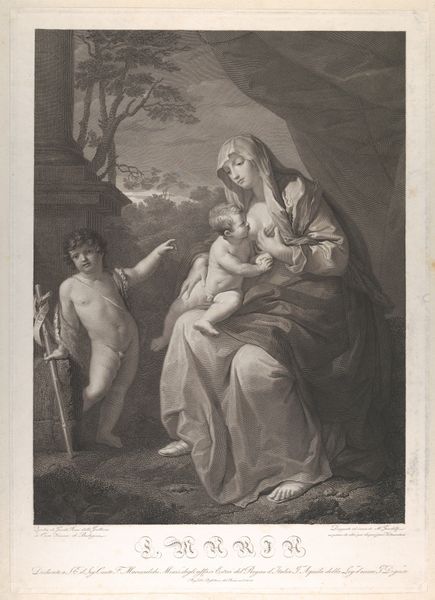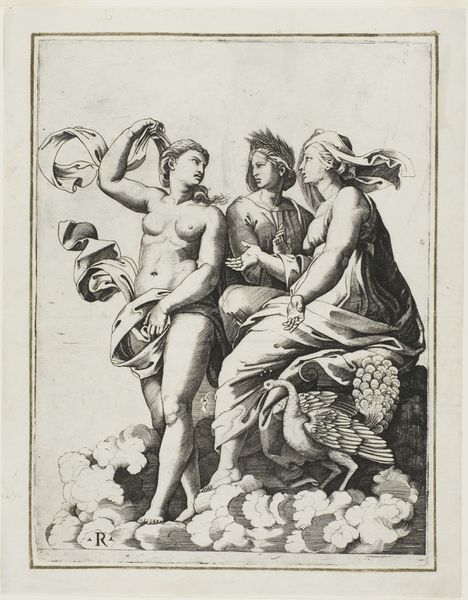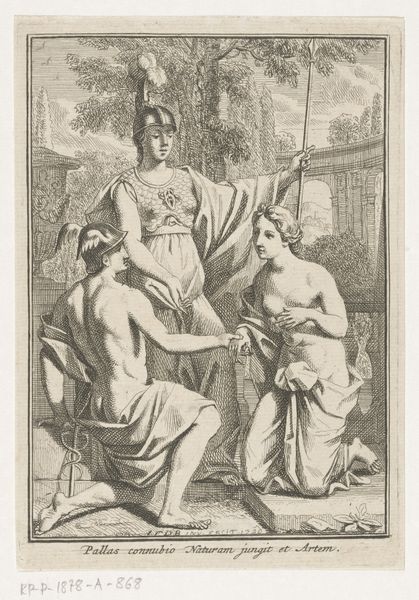
Dimensions: plate: 35.24 × 25.08 cm (13 7/8 × 9 7/8 in.) sheet: 42.86 × 29.21 cm (16 7/8 × 11 1/2 in.)
Copyright: National Gallery of Art: CC0 1.0
Editor: We’re looking at “Judgment of Paris,” an engraving from around the 1770s. The composition is fascinating; there's almost a stage-like quality to the figures. How do you interpret this work in its historical context? Curator: Considering the historical context, what strikes me is how this seemingly straightforward classical scene functioned within the print market. Engravings like this were commodities, widely distributed and consumed by a burgeoning middle class eager to engage with classical narratives. But let's look closer. Notice the landscape, it's not just a backdrop. How does the setting play into the meaning? Editor: Well, it’s not as grandiose or idealized as I expected. It feels...domesticated almost, like a park. Curator: Precisely. And consider the "nude". It’s less about pure aesthetics, and more about presenting accepted classical tropes in a palatable form for consumption. The print media and accessibility played a role in making nudes of goddesses socially palatable. Do you agree with my take on the social impact of distributing erotic visual artworks for the bourgeoise through the print media? Editor: It's fascinating to consider the political implication, a way for ordinary people to participate in a cultured world of classics and arts? It definitely shifts how I view art from that era. Curator: Exactly. It highlights how art isn't just created in a vacuum, and galleries serve purposes for cultural conversations that are linked to politics and socioeconomic statuses of both the public and artist. It changes our reading, doesn't it? Editor: Absolutely. I’ll definitely be considering the social and political context more when looking at prints.
Comments
No comments
Be the first to comment and join the conversation on the ultimate creative platform.
